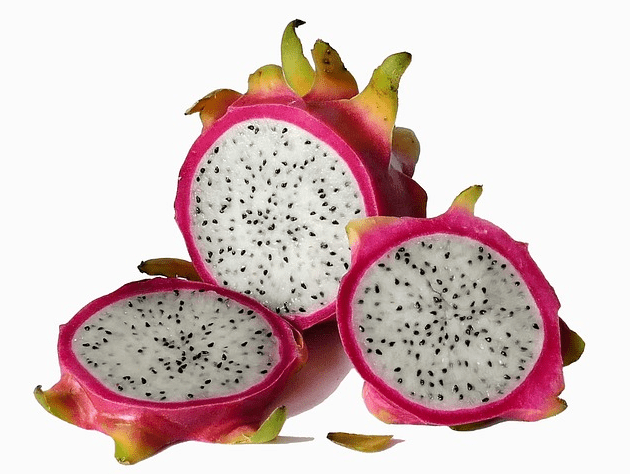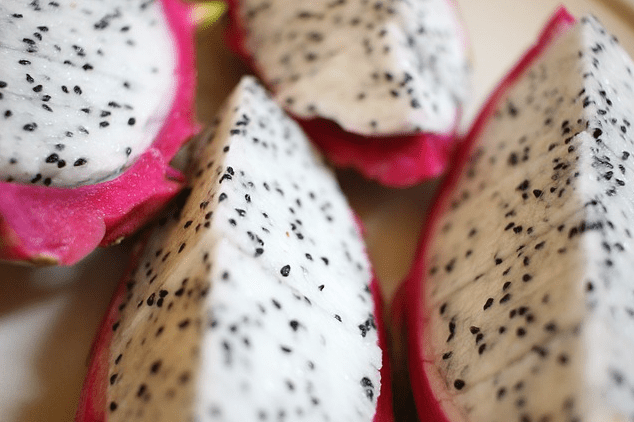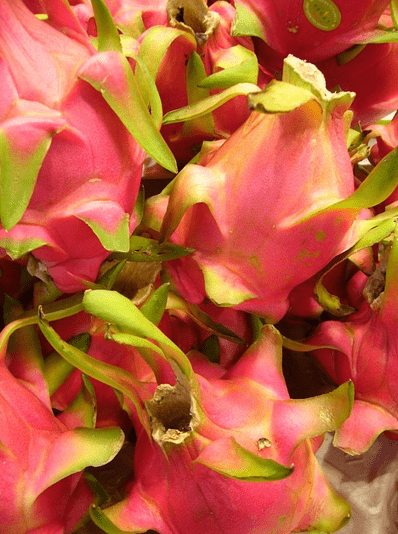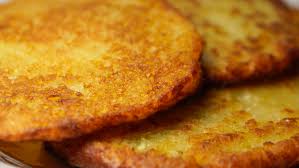The first time I encountered pitaya was in Thailand, over twenty years ago. I stared at this strange thing, a bright reddish-purple fruit with green leaves jutting out like flames. Its shape suits the nickname it has earned in many parts of the world: Dragon Fruit.
Though pitaya is strongly associated with the Far East and fits well among the unusual tropical fruits found in places like Thailand and Vietnam, it actually originates from Central America, with wild varieties common in Mexico, Guatemala, and Costa Rica.
In fact, it's a type of cactus, a close relative of the prickly pear (which, incidentally, also immigrated from Central America, despite its Israeli association). This dragon surprises not just on the outside but also inside. In contrast to its fiery exterior, when you cut open the pitaya, you're greeted with white flesh (though some varieties have pink or yellow flesh) speckled with tiny black dots (which are the plant's seeds), and a delicate, sweet, and slightly tart flavor.

Although pitaya is seen as a tropical fruit, in reality, in Mexico and Guatemala, some varieties thrive in desert conditions and require very little water. Speaking of varieties, while we're familiar with the red pitaya, there's also a yellow one, and many intermediate varieties that can be easily crossbred to select for certain traits.
This fact didn't escape Professor Yosef Mizrahi of Ben-Gurion University and the Negev Research Institute, who, back in the 1970s, developed varieties suitable for cultivation in Israel. One of the challenges of growing pitaya commercially is that in the wild (in Central America) it's pollinated by large fruit bats.
In the beginning, the plants required manual pollination. Over time, though, self-pollinating varieties were developed, making it much easier to grow pitaya in Israel, even if on a relatively small scale. As you might have noticed recently, organic farmers have also started growing pitaya, which is great.

Expanding the variety of available fruits is always a good thing, and pitaya is a wonderful addition. It can transform any fruit salad, smoothie, sorbet, or even a simple platter of fresh fruit into something much more exciting.
Dragon fruit is not only striking and delicious but also incredibly nutritious. It’s rich in dietary fiber, vitamin C, vitamin B, and a generous amount of lycopene (the pigment responsible for its red color), which is a powerful antioxidant.
The seeds—the tiny black specks in the white flesh that give the fruit a Dalmatian-like look—are full of essential omega-3 and omega-6 fatty acids, making pitaya both a healthy and delicious choice.









